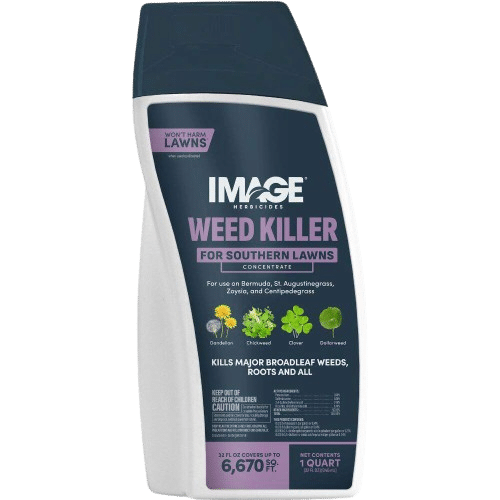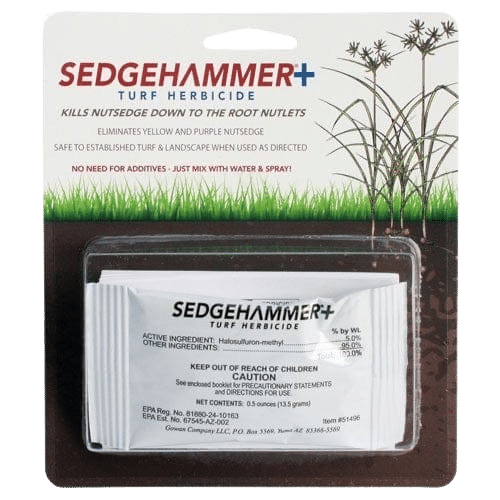Maintaining a lush, weed-free St. Augustine lawn in South Florida, particularly in Palm Beach County, requires a strategic approach to weed management. Post-emergent herbicides play a crucial role in controlling weeds that have already established themselves in your lawn. This comprehensive guide will explore the most effective post-emergent herbicides suitable for St. Augustine grass, incorporating insights from reputable sources and local South Florida homeowners to provide practical recommendations.
What Are Post-Emergent Herbicides?
Post-emergent herbicides are designed to target and eliminate existing weeds in your lawn. They differ from pre-emergent herbicides, which prevent weed seeds from germinating. Selecting the appropriate post-emergent herbicide is essential to ensure effective weed control without harming your St. Augustine grass.
Common Weeds in St. Augustine Lawns
Identifying the specific weeds invading your lawn is the first step toward effective control. In South Florida, common weeds that affect St. Augustine grass include:
- Crabgrass (Digitaria spp.): A summer annual grass weed with spreading growth habit.
- Dollarweed (Pennywort): A perennial with round, coin-like leaves that thrives in moist areas.
- Nutsedge: A fast-growing weed that outpaces St. Augustine grass, making it highly noticeable.
- Florida Betony (Stachys floridana): Also known as rattlesnake weed, it features distinctive segmented tubers resembling a rattlesnake’s rattle.
- Chickweed (Stellaria media): A mat-forming winter annual or short-lived perennial with small white flowers.
Top Recommended Post-Emergent Herbicides for St. Augustine Lawns
Selecting the right herbicide is crucial to effectively manage these weeds without harming your lawn. Here are some top recommendations:

Atrazine-Based Herbicides
Atrazine is effective against a variety of broadleaf weeds and certain grassy weeds. Products like Hi-Yield Atrazine Weed Killer are formulated for use on St. Augustine grass.
According to UF/IFAS Palm Beach County Extension, “proper weed identification, correct herbicide selection, and precise application methods are essential for healthy St. Augustine grass management in South Florida’s climate. Atrazine-based products continue to be widely recommended due to their versatility and safety.”
Active Ingredients:
- Atrazine (percentages vary by brand)

Celsius WG Herbicide
Celsius® WG Herbicide is a post-emergent herbicide designed to control over 150 broadleaf weeds and grasses in warm-season turfgrasses such as St. Augustinegrass, Bermudagrass, Centipedegrass, and Zoysiagrass. Its water-dispersible granule formulation contains three active ingredients: thiencarbazone-methyl, iodosulfuron-methyl-sodium, and dicamba, which work together to inhibit essential amino acids and disrupt plant growth. This combination effectively manages weeds like dollarweed, Virginia buttonweed, doveweed, and bull paspalum.
Celsius WG is known for its broad-spectrum control, reduced risk of turf injury under high temperatures, and minimal reapplication requirements. It is suitable for use on residential lawns, commercial properties, golf courses, sports fields, and other recreational areas. For optimal results, apply when weeds are actively growing and temperatures are above 60°F. Always follow the product label instructions for application rates and safety guidelines.
Active Ingredients:
- Thiencarbazone-methyl: 8.7%
- Iodosulfuron-methyl-sodium: 1.9%
- Dicamba: 57.4%.

Image Weed Killer for Southern Lawns
IMAGE® Weed Killer for Southern Lawns Concentrate is specifically formulated for southern turfgrasses, including St. Augustinegrass (such as Floratam, Palmetto, Citrablue and ProVista), Bermudagrass, Centipedegrass, and Zoysiagrass. This fast-acting herbicide targets and eliminates major broadleaf weeds down to the root without harming your lawn when used as directed.
It effectively controls weeds like dandelion, chickweed, clover, dollarweed, and spurge. For optimal results, apply when temperatures are between 45°F and 90°F. The 32 oz. concentrate covers up to 6,670 square feet and can be applied using a pump sprayer.
Active Ingredients:
- Penoxsulam: 0.14%
- Sulfentrazone: 0.14%
- 2,4-D, dimethylamine salt: 1.46%
- Dicamba, dimethylamine salt: 0.41%

Sedgehammer (halosulfuron-methyl)
SedgeHammer® Herbicide is a selective, post-emergent solution designed to control yellow and purple nutsedge without harming most turfgrass varieties, including St. Augustinegrass, Centipedegrass, Bermudagrass, and Zoysiagrass. It contains halosulfuron-methyl, which targets sedges at the root for long-term control.
Ideal for spot treatments, this easy-to-mix formula is best applied when sedges are actively growing and includes a measuring scoop for precise application. For best results, use with a nonionic surfactant.
Active Ingredients:
- Halosulfuron-methyl: 75%
Post-Emergent Herbicide Comparison for St. Augustine Lawns
| Product | Active Ingredients | Weeds Controlled | Safe for St. Augustine? | Notable Features |
|---|---|---|---|---|
| Atrazine-Based Herbicides (e.g., Hi-Yield Atrazine) | Atrazine (varies by brand) | Broadleaf weeds, some grassy weeds | ✅ Yes | Widely recommended by UF/IFAS; versatile and effective in South Florida |
| Celsius® WG Herbicide | Thiencarbazone-methyl (8.7%) Iodosulfuron-methyl-sodium (1.9%) Dicamba (57.4%) | Dollarweed, Virginia buttonweed, doveweed, bull paspalum, and more | ✅ Yes | Professional-grade; heat tolerant; minimal reapplication needed |
| IMAGE® Weed Killer for Southern Lawns | Penoxsulam (0.14%) Sulfentrazone (0.14%) 2,4-D (1.46%) Dicamba (0.41%) | Dandelion, chickweed, clover, dollarweed, spurge | ✅ Yes | Fast-acting; safe for Floratam and Bitterblue varieties |
| SedgeHammer® | Halosulfuron-methyl (75%) | Yellow and purple nutsedge | ✅ Yes | Great for sedge spot-treatments; long-term control with root targeting |
Weed Killer Application Tips and Best Practices
- Identify the Target Weeds: Accurate identification of the weeds in your lawn will help you choose the most effective herbicide. Different products are formulated to target specific weed types.
- Follow Label Instructions: Always adhere to the manufacturer’s instructions regarding application rates, timing, and safety precautions to prevent damage to your lawn and ensure effective weed control.
- Consider Environmental Conditions: Apply herbicides during favorable weather conditions—typically when temperatures are moderate and there is no rainfall expected for at least 24 hours. Avoid applying during the heat of the day to minimize stress on your lawn.
- Use Appropriate Equipment: Utilize calibrated sprayers to ensure even application and prevent overuse of the product, which can harm your lawn and the environment.
- Monitor and Repeat if Necessary: Some weeds may require multiple applications for complete control. Monitor the treated areas and reapply as needed, following the recommended intervals.
Common Mistakes to Avoid
When treating weeds in your St. Augustine lawn, homeowners often inadvertently make mistakes that can damage their lawn or render treatments ineffective. Here are some critical pitfalls to avoid:
❌ Using Non-Selective Herbicides
- Herbicides like Roundup (glyphosate-based products) are non-selective and will kill St. Augustine grass along with weeds.
- Always ensure you’re using a selective herbicide safe for St. Augustine lawns.
❌ Incorrect Application Timing
- Applying herbicides during extreme heat or right before rain reduces their effectiveness and can damage your grass.
- Ideal application times in South Florida are early mornings or evenings when temperatures are moderate and no rain is expected for at least 24 hours.
❌ Improper Mixing and Overapplication
- Never exceed recommended dosage thinking it will provide quicker or more effective results; it will likely harm your grass.
- Carefully calibrate sprayers and strictly follow product guidelines.
Environmental and Pet Safety Considerations
Residents in Palm Beach County often prioritize both environmental consciousness and pet safety. Here are guidelines to safely maintain your St. Augustine lawn:
🌱 Environmentally-Friendly Alternatives
- Consider organic weed control options such as ammonium nonanoate, corn gluten meal or vinegar-based herbicides, particularly for spot-treatments.
- While these may require multiple applications and be less potent than chemical solutions, they offer reduced environmental impact.
🐶 Pet Safety Guidelines
- Always adhere to product-specific waiting periods before allowing pets back onto treated lawns, typically between 24-48 hours.
- Opt for herbicides labeled as pet-safe whenever possible.
Step-by-Step Herbicide Application Guide
For best results, follow these detailed application steps:
Step 1: Preparation
- Identify the specific weeds you want to eliminate.
- Ensure your lawn is not stressed due to drought, disease, or recent mowing.
Step 2: Mixing
- Wear appropriate safety gear (gloves, mask, eyewear).
- Follow the herbicide label instructions precisely, mixing the herbicide in a calibrated sprayer.
Step 3: Application
- Apply evenly across the affected area. Spot treatments can minimize herbicide use and limit lawn stress.
- Avoid spraying herbicide on non-target areas such as flowerbeds or ornamental plants.
Step 4: Aftercare
- Allow treated areas to dry thoroughly, and refrain from watering for at least 24 hours post-application.
- Monitor closely, and plan for repeat applications if necessary after the recommended waiting period.
Seasonal Timing Recommendations (Palm Beach County Specific)
Understanding local seasonal conditions is essential:
- Spring (March-May): Ideal for early-season weed treatments as new growth emerges.
- Summer (June-August): Use caution due to heat stress—choose cooler mornings or late afternoons.
- Fall (September-November): Effective timing for late-season weeds; consider another round of treatments.
- Winter (December-February): Minimal weed growth; limited herbicide application typically necessary.
Herbicide FAQs
Here are answers to frequently asked questions from South Florida homeowners:
Q: “Weeds came back quickly after I treated—why?”
A: Weed seeds in the soil or incomplete herbicide coverage can cause regrowth. Repeat treatments may be needed to manage persistent weeds effectively.
Q: “Can I apply weed killer during summer heat?”
A: It’s possible, but you should only apply during the coolest times of the day to minimize stress on your lawn.
Q: “How long should I keep kids or pets off the lawn after application?”
A: Typically 24-48 hours, but always follow specific product label instructions.
Local Insights & Tips Specific to Palm Beach County
Palm Beach County’s unique climate and soil conditions create distinct challenges:
- Sandy Soil Conditions: Due to sandy soil, consider adding organic matter or compost to improve lawn health and reduce susceptibility to weeds.
- Salt Spray (Coastal Areas): In coastal communities, select herbicides with salt-tolerant formulations or use organic treatments.
- HOA Regulations: Always verify with your HOA before applying herbicides, as specific rules or restrictions may apply. For example, fertilizers containing nitrogen and/or phosphorous are prohibited under the Palm Beach County fertilizer ban between June 1st and November 1st.
Conclusion
Achieving and maintaining a beautiful, weed-free St. Augustine lawn in Palm Beach County requires strategic herbicide selection, careful application, and awareness of local conditions. By following these comprehensive guidelines, avoiding common pitfalls, and incorporating expert recommendations, your St. Augustine lawn can thrive, enhancing your home’s beauty and value year-round.
